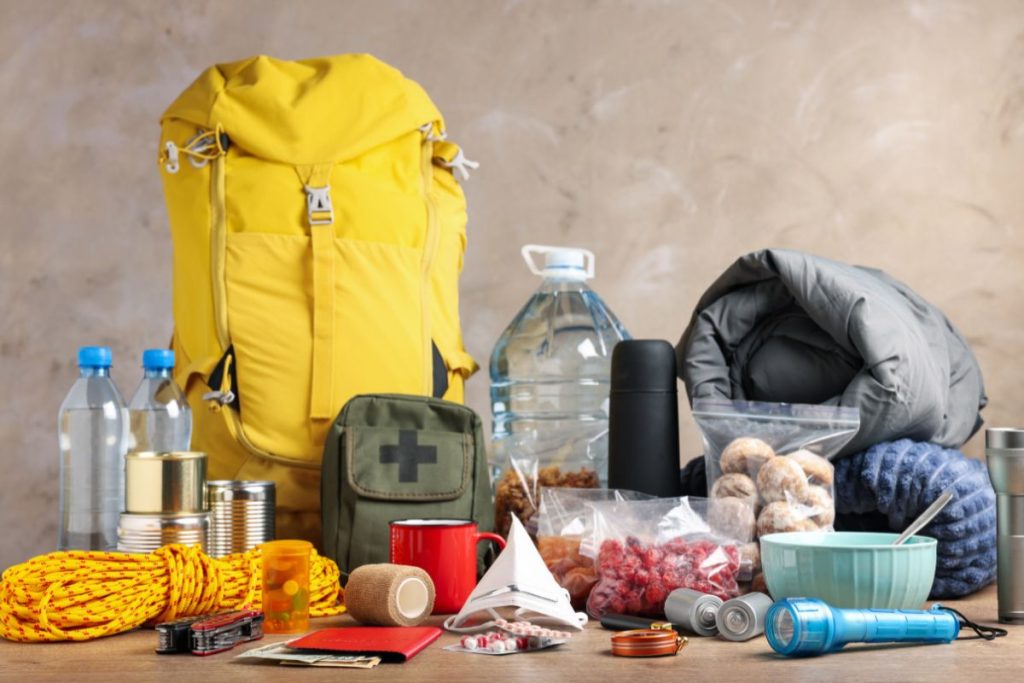

In today’s society, unanticipated occurrences such as natural disasters, economic crises, and even worldwide pandemics underscore the need for emergency preparation. Whether you’re planning for a natural catastrophe or an unexpected crisis, a survival food pack may make all the difference in keeping you and your loved ones nourished and secure. It will keep you and your family safe and fed.
This blog post will tell you everything you need to know about survival food kits, such as what they contain, why they’re important, and how to pick the best one for your needs.
Table of Contents
Survival food kits are made for times when it might be hard to find fresh food and drink. The food in these kits is important and has a long shelf life, so you can be ready for a variety of situations:
A normal emergency food kit has a range of foods that can be kept for a long time and don’t need to be cooked. These kits may be different based on the company you buy them from and the type of kit you pick, but here are some things that most of them will have:
It’s important to choose the right kit. To help you pick the best choice for your needs, here are some things to think about:
Some kits are designed to last 25 years, and the shelf life of the contents inside them is quite crucial. Look for kits that come with freeze-dried and vacuum-sealed foods that stay healthy and fresh for a long time.
Check to see how many calories each kit gives you each day. Adults need between 2,000 and 2,500 calories every day, so make sure the kit has enough for that, especially if you’re getting ready for a family.
If you plan on camping or climbing outdoors, be sure the kit you purchase is lightweight and simple to transport. However, larger selections may be preferable when preparing at home.
Some kits can be made with just hot water, while others might need more cooking. Think about how easy it will be to cook the food in different emergency situations based on your access to water and heat.
If you have special food needs, look for gluten-free, dairy-free, or veggie choices. There are now a lot of kits that can meet the needs of people with different diets without lowering the quality or shelf life.
Looking for safe food kits for survival? Here are some choices based on your needs, whether you’re getting ready for a family trip, a camping trip, or long-term storage at home:
To keep the kit’s quality and life, it needs to be stored correctly:
Getting a survival food kit is an important part of being fully prepared for any disaster. These tools can help you and your family a lot when bad things happen if you choose the right ones. Know what you need and choose a kit that fits those needs. Then you can be sure that you’re ready for anything.
Q1. How much survival food do you need?
Begin with a minimum 3-day supply per person, but shoot for 2–4 weeks to plan for extended interruptions. Long-term kits (1–12 months) are the best for serious preparedness.
Q2. What is the difference between freeze-dried and dehydrated food?
Freeze-dried food keeps more nutrients, has a better taste, and rehydrates quicker. Dehydrated food is less expensive but might take longer to cook.
Q3. Is canned food a good option?
For short-term emergencies, yes. But canned food is heavy, takes up space, and expires more quickly. Survival kits provide lightweight, long-term solutions (up to 25 years).
Q4. Are survival food kits safe after expiration?
If properly stored, they can last longer than their stated shelf life, but taste and nutrition may decline. Always inspect for damage or unusual odours prior to consumption.
Q5. How do you prepare survival meals in an emergency?
Most require only boiling water. Pour it into the pouch, stir, seal, and let stand 5–10 minutes. Cold water might work if no heat is available, but with longer waiting periods.
Q6. Where do you store my survival food?
Store in a cool (50–70°F), dry, dark place—in the dark, away from sunlight, moisture, and insects. Do not store in garages or attics with very high or very low temperatures.
Q7. Are there kid-friendly survival food options?
Yes, most kits contain less pungent flavours and snack-sized meals that are suitable for children. Some companies also provide family-oriented kits.
Sign up to receive our email, delivering the latest stories straight to your inbox.
